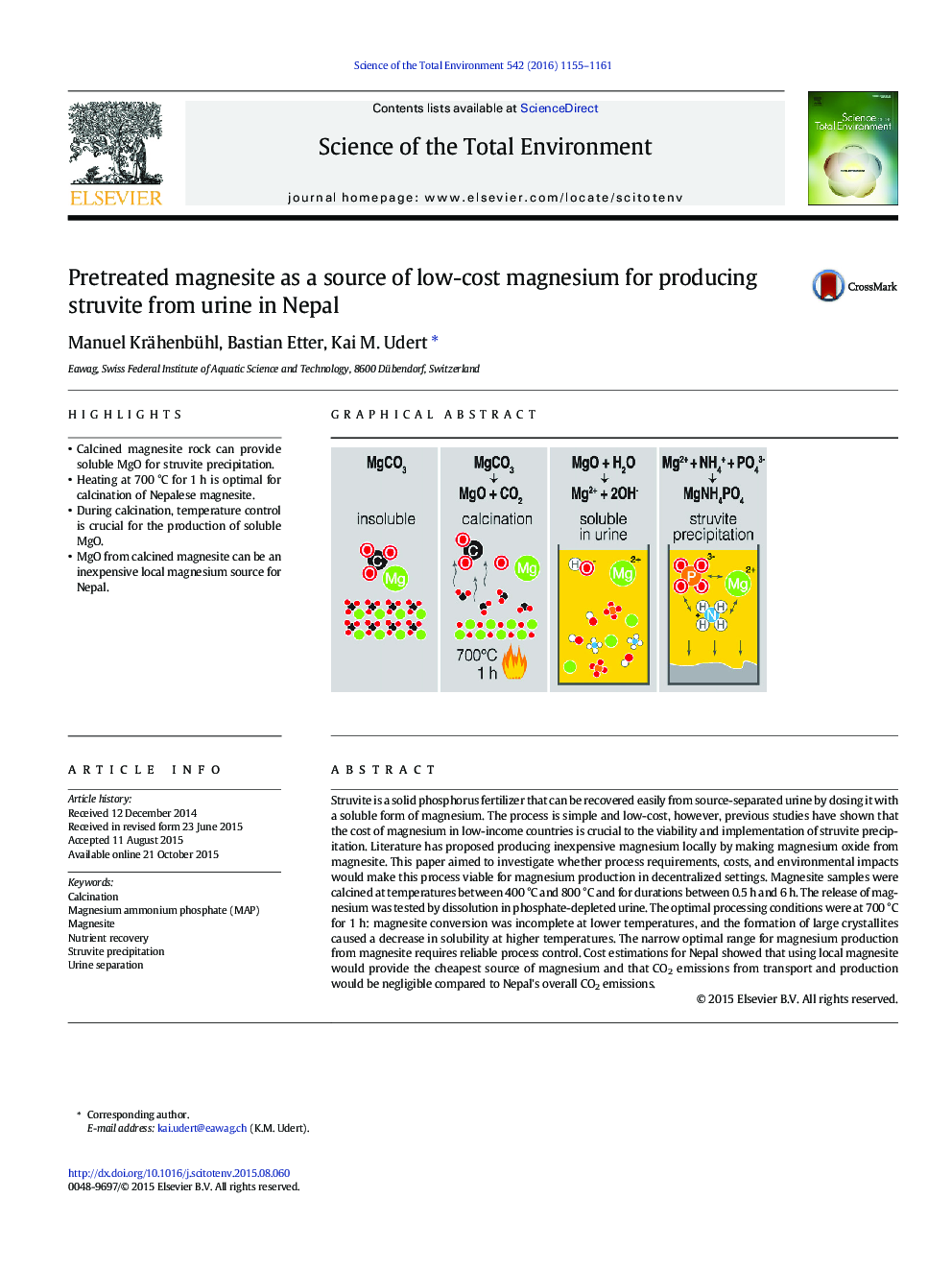| کد مقاله | کد نشریه | سال انتشار | مقاله انگلیسی | نسخه تمام متن |
|---|---|---|---|---|
| 6323812 | 1619741 | 2016 | 7 صفحه PDF | دانلود رایگان |

- Calcined magnesite rock can provide soluble MgO for struvite precipitation.
- Heating at 700 °C for 1 h is optimal for calcination of Nepalese magnesite.
- During calcination, temperature control is crucial for the production of soluble MgO.
- MgO from calcined magnesite can be an inexpensive local magnesium source for Nepal.
Struvite is a solid phosphorus fertilizer that can be recovered easily from source-separated urine by dosing it with a soluble form of magnesium. The process is simple and low-cost, however, previous studies have shown that the cost of magnesium in low-income countries is crucial to the viability and implementation of struvite precipitation. Literature has proposed producing inexpensive magnesium locally by making magnesium oxide from magnesite. This paper aimed to investigate whether process requirements, costs, and environmental impacts would make this process viable for magnesium production in decentralized settings. Magnesite samples were calcined at temperatures between 400 °C and 800 °C and for durations between 0.5 h and 6 h. The release of magnesium was tested by dissolution in phosphate-depleted urine. The optimal processing conditions were at 700 °C for 1 h: magnesite conversion was incomplete at lower temperatures, and the formation of large crystallites caused a decrease in solubility at higher temperatures. The narrow optimal range for magnesium production from magnesite requires reliable process control. Cost estimations for Nepal showed that using local magnesite would provide the cheapest source of magnesium and that CO2 emissions from transport and production would be negligible compared to Nepal's overall CO2 emissions.
270
Journal: Science of The Total Environment - Volume 542, Part B, 15 January 2016, Pages 1155-1161